These Are The Lilacs Recommended For Containers By Master Horticulturists


Elizabeth is a Permaculture Garden Designer, Sustainability Consultant and Professional Writer, working as an advocate for positive change. She graduated from the University of St. Andrews with an MA in English and Philosophy and obtained a Diploma in Applied Permaculture Design from the Permaculture Association.
Reviewed By COLIN SKELLY

Colin is a Horticulturist and Horticultural Consultant with experience in a range of practical and managerial roles across heritage, commercial and public horticulture. He holds the Royal Horticultural Society’s Master of Horticulture award and has a particular interest in horticultural ecology and naturalistic planting for habitat and climate resilience.
Contributions From DAVID GRESSLEY

David is a self-proclaimed ‘plant geek’ who graduated from Ohio State University with a BSc in Agriculture. He’s a Board Member of the International Lilac Society and the Vice President of the US division. With experience working in arboretums, he is now the Head Horticulturist at Spring Grove Cemetery, a recognised historical landmark based in Ohio.
IN THIS GUIDE
LILAC GUIDES
Container Growing
Deadheading
Planting
Propagation
Pruning
Lilac is an attractive shrub, and although it only blooms for a brief period, it is great for wildlife – and the flowers are actually edible too.1Foraging Guide Lilac. (n.d.). The Foraging Course Company. Retrieved March 21, 2023, from https://www.foragingcoursecompany.co.uk/foraging-guide-lilac
Syringa cultivars can make great choices for many gardens, but if you don’t have much space, or can only grow in containers, you might wonder whether you can grow lilac in pots.
Can You Grow Lilac In Pots?
“Lilacs can theoretically be grown in large containers, but they are an aggressive growing plant when in good health and vigour,” says David Gressley, Board Member at the International Lilac Society.
The important thing to understand is that there are many different lilac cultivars to choose from.
These often come from the common lilac, Syringa vulgaris, but can also be derived from other lilac species.
Some cultivars grow very large, up to around 7m tall and wide.

However, the good news is that there are also many much more compact options, and many of these are excellent choices for small gardens, or, indeed, for container cultivation.
Some compact lilac cultivars that could be good choices for containers include:
S. Flowerfesta series
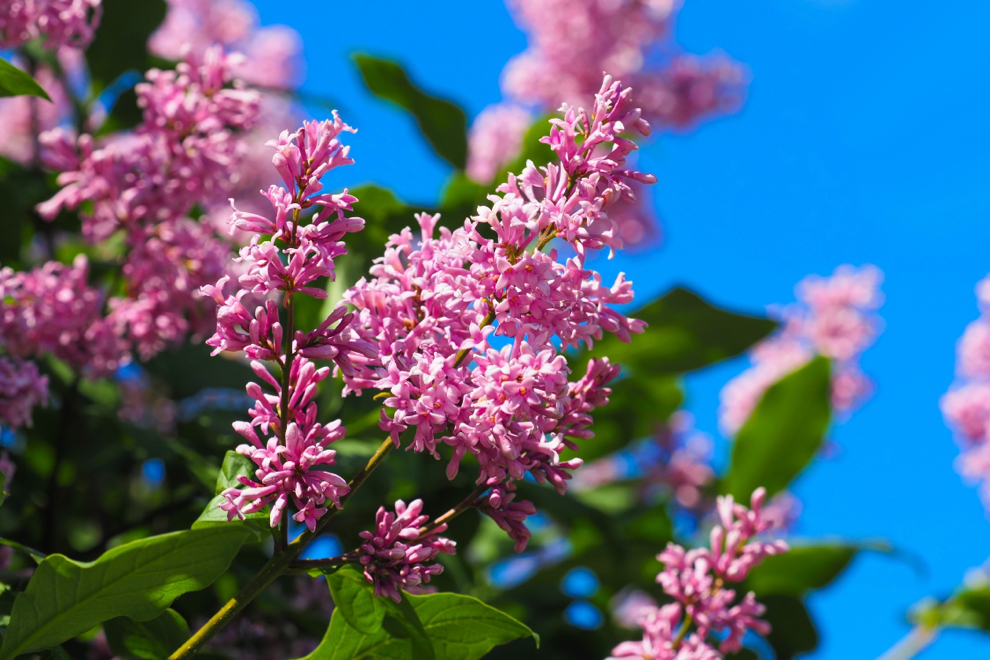
This compact lilac is S. meyeri, and grows into an upright deciduous shrub.
It has panicles of flowers in different colours (depending on the particular choice from this range) in spring/early summer.
It is also H7 hardy.
S. ‘Josee’
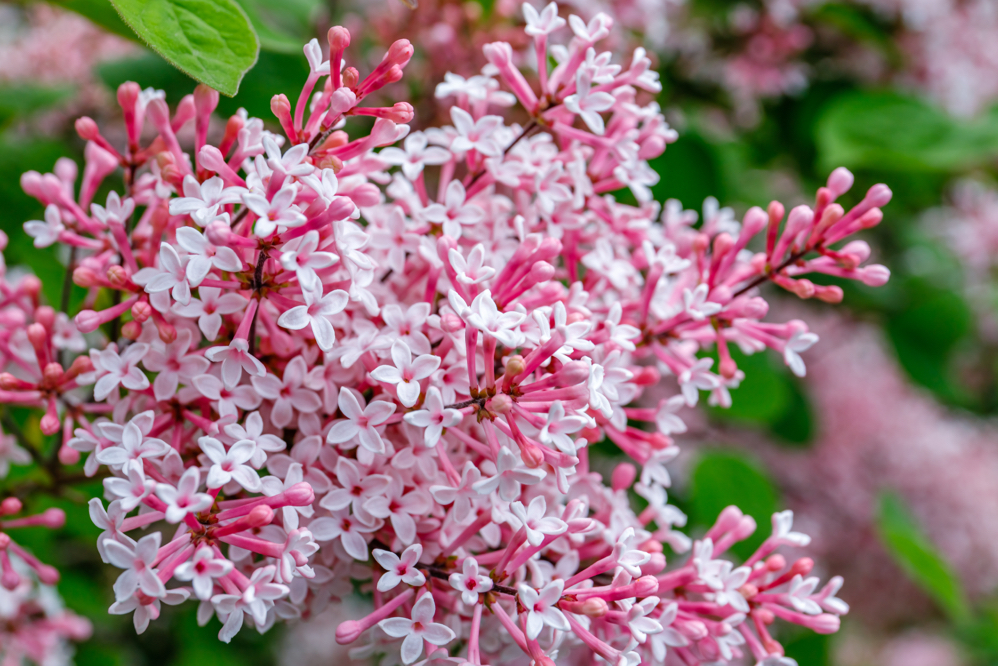
This bushy, rounded shrub has matt leaves that are oval to heart-shaped.
In the late spring and intermittently through to late autumn, it produces dense sprays of lavender-pink flowers.
It repeats flowers most reliably in cool climates and is H6 hardy.
S. ‘Minuet’
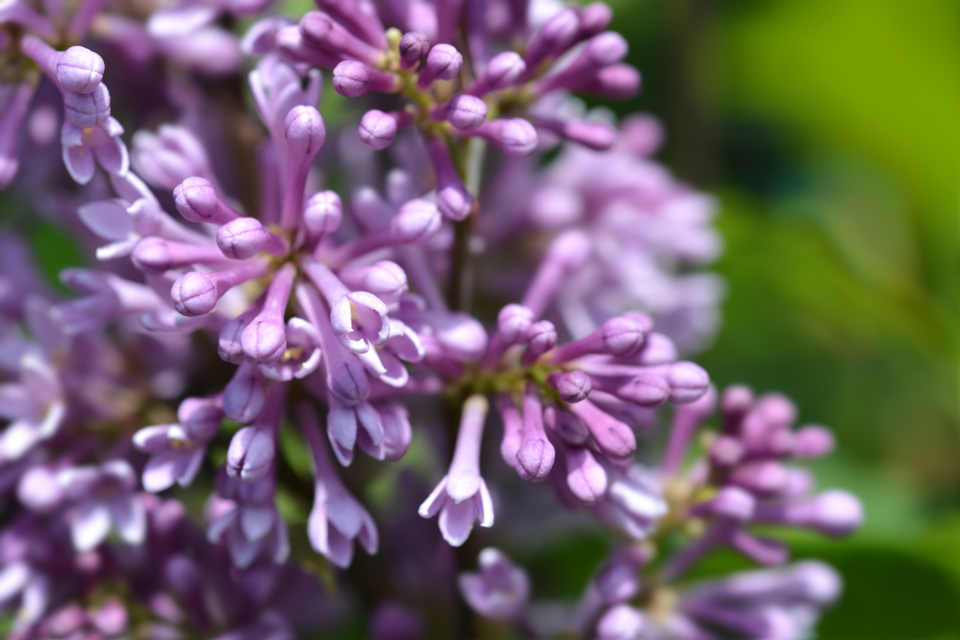
Slower growing and with a dense, rounded form, this lilac is S. prestoniae.
It has oval green leaves, and is a floriferous varietal, with pink buds that open to paler pink blooms, on erect to nodding panicles.
Syringa ‘Minuet’ is H7 hardy.
S. meyeri ‘Palabin’
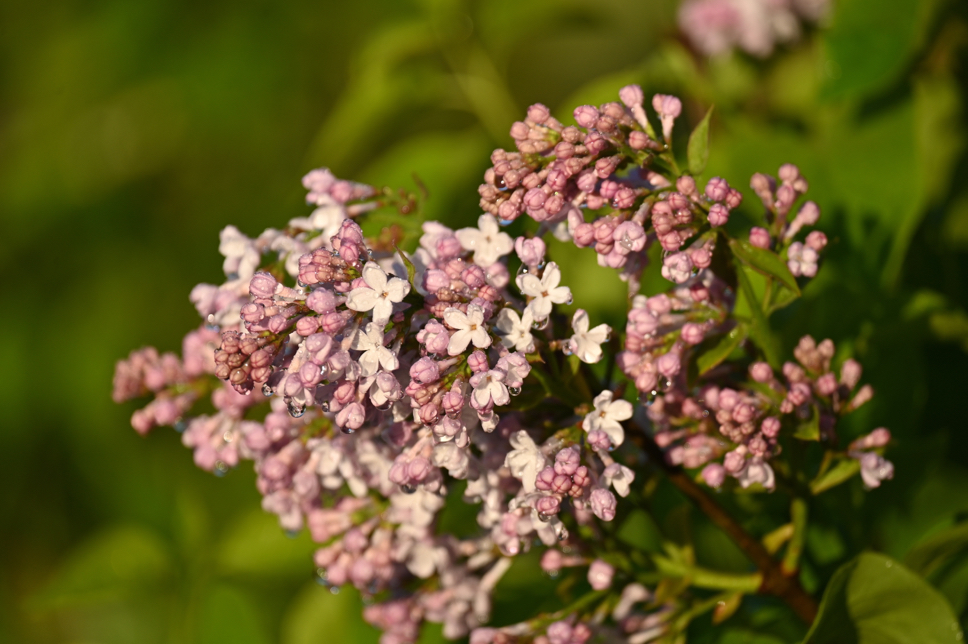
Another bushy and slow-growing lilac that is H5 hardy.
This option has broadly ovate, dark green leaves and bears upright panicles of small, fragrant flowers with a lilac-pink hue in late spring or early summer.
“Because my soil is acidic, I can’t grow the large S. vulgaris cultivars that I would like to in my garden,” shares Master Horticulturist Colin Skelly.
“To overcome this, I purchased S. meyeri ‘Palibin’ to grow in a container. Although it is smaller lilac it is now 1.5m height and width, so still needs a large pot and plenty of water in the summer.
“Through annual pruning and re-potting every 2-3 years, it stays around this size and healthy, but bear in mind the eventual size of ‘small’ lilacs and make sure you have the space to accommodate them.”
S. ‘Red Pixie’

This is a compact lilac with spreading branches.
The leaves are small, and of a mid-green hue, turning yellow in autumn.
In late spring, and often again in late summer or early autumn, this shrub bears sprays of scented flowers which open from red buds to deep pink blooms, which fade to a paler pink as they mature.
These types rarely exceed 1.5m in height and width, so are much better suited to container cultivation, and are H5 hardy.
Choosing A Container
Even smaller lilac cultivars will usually require a reasonably large container.
Typically, when growing a lilac shrub in a pot, you will need to choose one that is at least 60cm in diameter.

The container you choose should be sturdy, stable and heavy enough to cope with a shrub without tipping or blowing over when placed in your garden.
It is also important to make sure that whatever container you choose has adequate drainage hole or holes at the base, so that excess water can drain away freely.
Choosing Your Compost
Lilac needs a soil-based growing medium for best results when being grown in a container longer term.

The growing medium typically chosen should be a peat-free mix with some sand or grit added to improve the drainage.
Potting Up Syringa
When potting up lilac, you should make sure that the shrub sits at the same level that it sat in its previous pot.
Place a little of the growing medium into the base of the pot, then place the lilac shrub into the pot and firm more of the growing medium around the sides, making sure that there are not any air pockets around the roots.
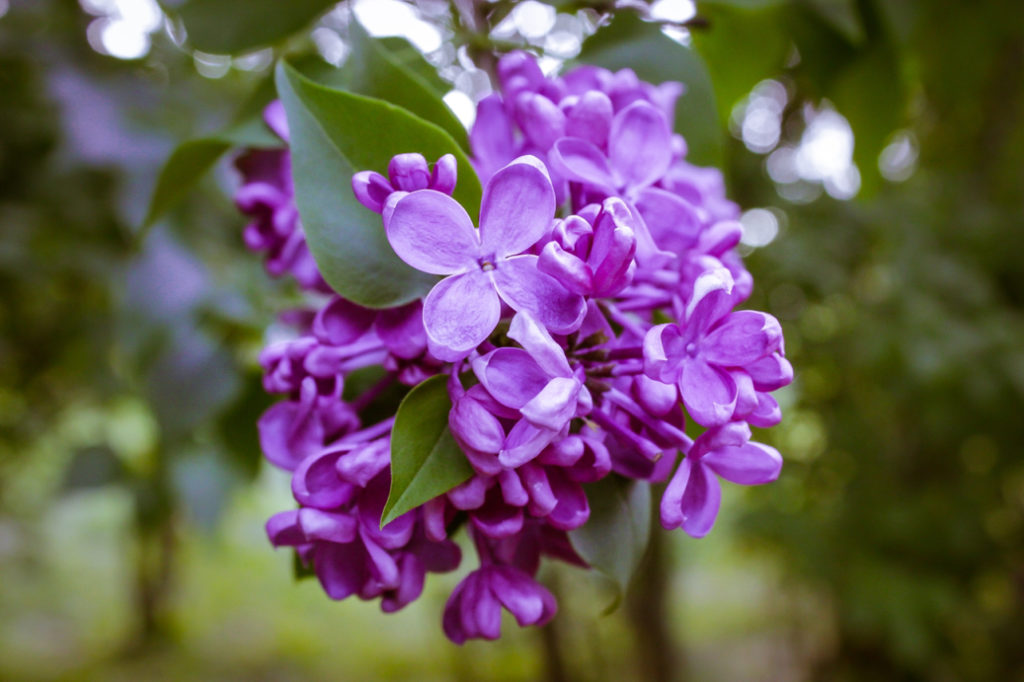
Once you have placed the lilac into its new container, water it in well, making sure that excess water can drain away freely, and spread an organic mulch over the surface of the soil.
How Many Can You Plant Per Pot?
Typically, lilac is grown on its own in a container.
Remember that even the smaller lilac shrubs will grow into fairly large plants.
Lilacs also have a fairly shallow root system so might experience excess competition if other plants are placed alongside them.
Remember, however, that lilac can benefit from having other plants growing in containers nearby, for purposes of organic pest control.
For example, plant flowers nearby that attract predatory insects that help keep populations of pests like thrips down.
Just make sure that your lilac has good airflow and space to breathe since overcrowded conditions can increase problems with infection with fungal issues.
Potted Lilac Care
Though lilac in the ground is a great low-maintenance plant, lilac in pots will typically require a little more care and take up a little more of your time, largely because of the necessity of keeping the medium moist.
However, even in pots, lilac is a relatively easy and straightforward shrub to grow.
To care for lilac in containers, place them in a sunny and sheltered position, with a moist yet free-draining medium, in such a position that excess water can drain away as it should.

Elevating pots with pot stands or feet can help to ensure that winter wet does not cause an issue.
In the ground, lilac can also cope with an exposed location, but when grown in pots it is best to choose a sheltered spot so that the plants don’t become unstable and potentially blow over in strong winds.
“Periodic root pruning can be incorporated into the maintenance regime,” says David.
“In essence, containerised lilac can be treated much like how a bonsai plant is maintained if you want to grow a small shrub.”

Other things you can do to ensure your lilac grows well in pots include:
- Watering it regularly during particularly dry seasons (take particular care to keep the growing medium moist during the period of establishment).
- Remaining vigilant for pests, which may cause damage to plants, especially while they are young.
- Deadheading as the flowers fade if desired to keep things neat and tidy (though this job is certainly not essential).
- If you would like to propagate your lilac and obtain new plants, this is best achieved by taking softwood cuttings, or layering in summer.
- Pruning to reduce size, if required, in the dormant period in winter (these shrubs respond well to hard pruning but since they flower on the previous year’s wood, note that you will lose flowers for at least a year if you cut back all the old branches).
- If lilac in pots blooms poorly, check that it has enough sunshine, and that it is not waterlogged. In some locations, with some lilacs, it may be helpful to cover young plants to protect flowers against late spring frosts.
References
- 1Foraging Guide Lilac. (n.d.). The Foraging Course Company. Retrieved March 21, 2023, from https://www.foragingcoursecompany.co.uk/foraging-guide-lilac
